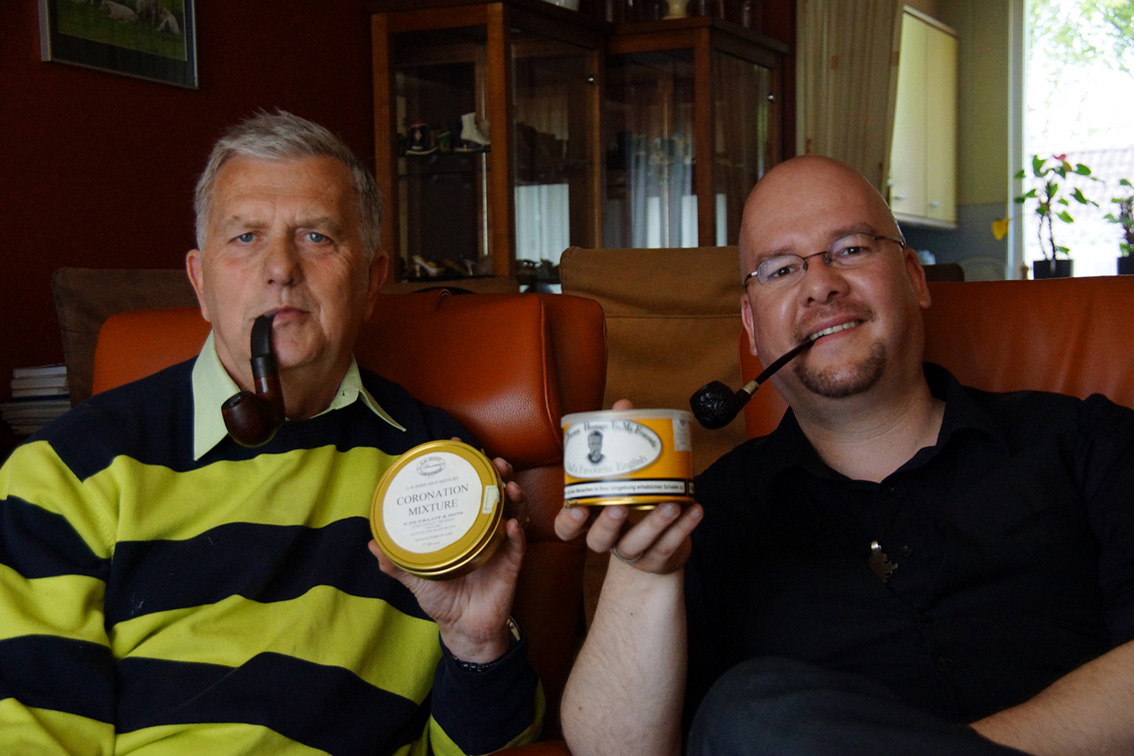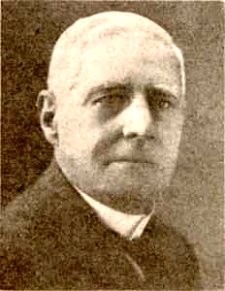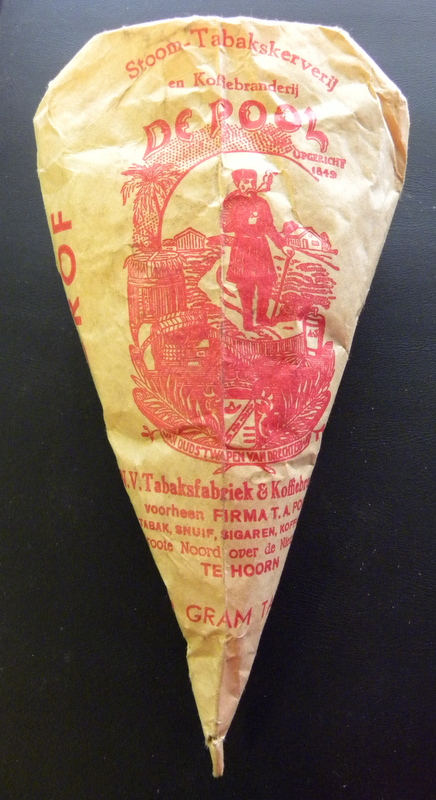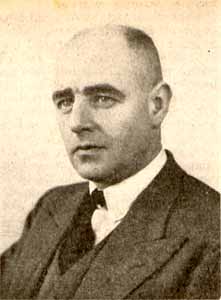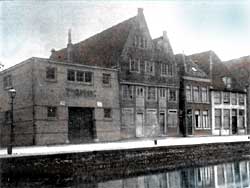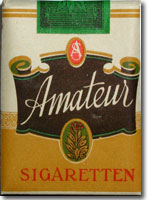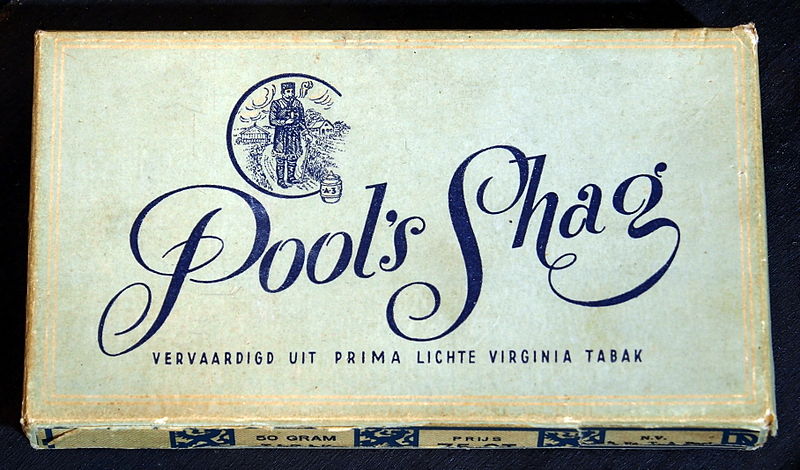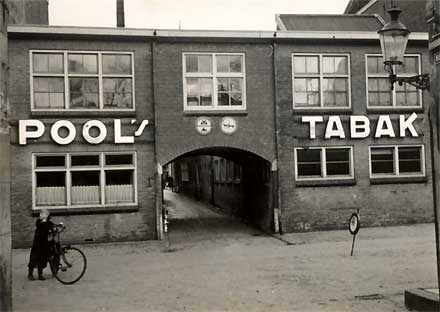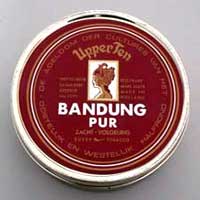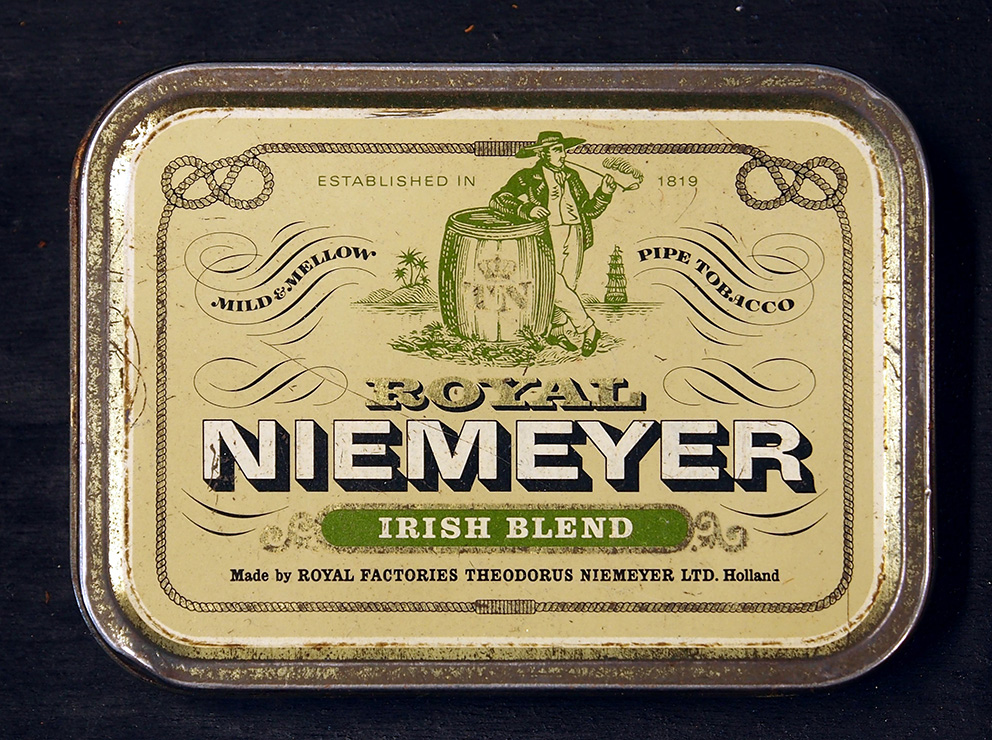One of my pipe tobacco mentors is my friend Klaas. I learned a lot from him, had my first experiences with GL Pease and Balkan Sobranie thanks to the good man. Klaas his nickname on the Dutch/Belgian pipe-smokers forum is Upper Ten. It is one of his favourite tobacco brands but sadly it’s no longer made. Fortunately Klaas had a far-sighted vision and stocked up on Upper Ten products, which he still enjoys to this day. Of course he gave me lots of samples of his “treasures” which triggered my interests. So I did some research and discovered Upper Ten originally was made in The Netherlands by Pool’s tobacco factory in the city of Hoorn.
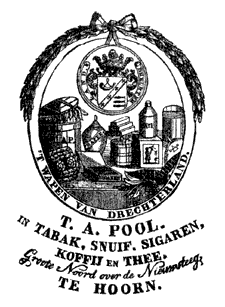 The story starts on 1 March 1849 when Teunis Albertus Pool began his shop and tobacco factory at the Groote Noord 55 at the age of 23. Shortly before Teunis got married to Bertha Helena van der Linden and began his one-man company at a time when tobacco was still seen as a stimulant and was mostly sold separately. The property consisted of three floors. Downstairs was the shop where groceries, cigars and tobacco were sold. Above the shop was a small tobacco factory and housing. On 16 February 1850 daughter Alida was born. Soon afterwards, 1 May 1850, the tobacco company expanded with hiring an assistant, apprentice tobacco blender John Dros.
The story starts on 1 March 1849 when Teunis Albertus Pool began his shop and tobacco factory at the Groote Noord 55 at the age of 23. Shortly before Teunis got married to Bertha Helena van der Linden and began his one-man company at a time when tobacco was still seen as a stimulant and was mostly sold separately. The property consisted of three floors. Downstairs was the shop where groceries, cigars and tobacco were sold. Above the shop was a small tobacco factory and housing. On 16 February 1850 daughter Alida was born. Soon afterwards, 1 May 1850, the tobacco company expanded with hiring an assistant, apprentice tobacco blender John Dros.
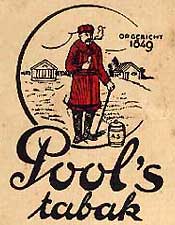 Sadly Bertha, the wife of Teunis, dies young on 17 May 1857 at the age of 33. 8 years after starting a family and starting a business Teunis Pool is a widower. Daughter Alida is just 7 years old. Setbacks like these certainly have influenced the development of the company. Soon on 25 March 1858 Teunis Pool remarried with Cornelia Christina Ohmstede in Alkmaar. This marriage remained childless and therefore there was no succession in the male line of the company. Which remained small, Pool stuck to one assistant and the clientèle was limited to Hoorn and the surrounding area. It mainly supplied to individuals. Despite its size Pool had the chance to build a trusted brand and the name “Pool’s tabak” became a household name over the years. When in 1891 Teunis Albertus Pool died his widow Cornelia Ohmstede took over business for a few years. In 1898 the company was taken over by Jacob Ruyter (17-8-1859) and the name “TA Pool” was maintained.
Sadly Bertha, the wife of Teunis, dies young on 17 May 1857 at the age of 33. 8 years after starting a family and starting a business Teunis Pool is a widower. Daughter Alida is just 7 years old. Setbacks like these certainly have influenced the development of the company. Soon on 25 March 1858 Teunis Pool remarried with Cornelia Christina Ohmstede in Alkmaar. This marriage remained childless and therefore there was no succession in the male line of the company. Which remained small, Pool stuck to one assistant and the clientèle was limited to Hoorn and the surrounding area. It mainly supplied to individuals. Despite its size Pool had the chance to build a trusted brand and the name “Pool’s tabak” became a household name over the years. When in 1891 Teunis Albertus Pool died his widow Cornelia Ohmstede took over business for a few years. In 1898 the company was taken over by Jacob Ruyter (17-8-1859) and the name “TA Pool” was maintained.
The first years after the takeover business did not really went smooth. With some experience as a representative of a cocoa factory in the Zaanstreek, Jacob Ruyter visited West Frisian villages to see if he could interest retailers for his products. The travels also took him through the cabbage fields of Broek op Langedijk. It is striking that 100 years later there are still people who can remember a phrase that refers to this period: “In the land of cabbage, one smokes tobacco from Pool” Possibly Jacob Ruyter had a good nose for marketing because the slogan “Pool’s tobacco, there is no better” also sounds pretty nice. Anyway, the tactic of travelling sales worked well, so in 1901 the company could begin to expand. In that year not only the property at the Groote Noord was renovated, but also the building behind it, Achterom 60. In 1918 an electric motor was purchased so the (then) cheap and convenient energy source electricity could be used.
From a regional based business the company slowly grew with outlets in several towns and villages in the country. Besides the increase of the market the entry of some of Jacob Ruyter’s sons to the company was an important reason for the growth potential. Business was good and when in 1919 the building of Achterom 54 became available for sale it was purchased. From then Achterom 60, which until then was used for the complete processing of the tobacco, was only used for the cutting. The packing department went into the new property. The separated cutting and packing departments meant in practice that tobacco after the cutting had to be transported by road to the new premises to be weighed there and packed. Initially the tobacco boxes were brought by foot to the new building, later a cart was used. After weighing the tobacco was packaged in pointy paper bags or larger white packages with red lettering. However, weighing the tobacco for the pointy brown paper bags and filling them always remained handwork.
The growth of the business made it necessary to store the tobacco stocks without using a nearby warehousing company. To achieve that a cheese store on the Nieuwendam was bought in 1923. After a major renovation the building was brought into use as a tobacco warehouse. From that moment thousands of tobacco bales came from Kentucky, Virginia, Java, Sumatra and Cuba and were stored at the warehouse. The crisis years beginning in 1929 did not seem to pose an obstacle for Pool to grow. On 20 March 1931 the company was converted into a N.V. and a management change was simultaneously implemented. The already old Jacob Ruyter became a supervisory director while sons Peter and Nico together formed the management. The company continued to grow and halfway the 1930’s the biggest renovation in the history of Pool was done.
With this major renovation, starting in 1935, the two buildings Achterom 48 and 50 were added to the company. Along with the other premises a contiguous set of four buildings arose at the Achterom together with a striking new air-bridge. The company, which was previously divided into two parts, was made one now. So the the troubles of transporting the semi-finished products from one building to another was not longer necessary. This was not only a huge time saver, but also the special permit to transport non-taxed tobacco across the streets was not longer needed. Also the tobacco stayed in the constant temperature of the factory. Mid-March 1941 a permit was requested and granted to convert the shop into office space. The store, a remainder of the business as it was founded in 1849, has been made redundant by the development of the company. The year 1941 was in other ways a turbulent year for the company. Nico Ruyter died and from that moment Peter Ruyter became the sole director and responsible for the continued management of the firm.
Unfortunately WWII meant a difficult period for the company and many other businesses and industries. The supply of foreign tobacco stopped and to fairly share the limited tobacco stocks ration stamps were introduced in 1942. To be able to still produce and survive the Dutch tobacco industry started with processing home-grown tobacco. Traditionally in Amerongen and the surrounding region tobacco was cultivated (see my “Dutch tobacco cultivation (no, not weed…)” blogpost) and also Pool was for a part dependent on the production from this area. Additionally home-grown tobacco was used, which was mostly grown by amateurs on small plots of land. After WWII it took some years for the domestic production and imports of foreign goods to come back to an acceptable level. Only after 1949 the import of foreign cigarettes and tobacco was fully up and running.
1 March 1949 was the official 100th anniversary of Pool firm. However, the supply of foreign tobacco still had not fully begun. Despite these remnants of the war the developments inside and outside the company went on as usual. After the war it soon became clear that there was a shift in sales in favour of the cigarette and rolling tobacco (shag). To produce shag a new cutting-machine was purchased. Shag requires a fine-cut and the old machines Pool had were designed for the production of pipe tobacco with its broader cut. To further increase production a new packaging machine was bought In the field of the daily management change was also necessary. The succession in the line of the Ruyter family was ensured by the appointment of Jacob Ruyter jr., son of Piet Ruyter, as director.
For Pool a transition to the production of cigarettes on the Achterom location was impossible. Cigarette machines and the related packaging lines were expensive and large. Besides, the buildings were too small to store all the equipment. Expansion in the down-town area was not possible and a relocation of the company so soon after the war was not only too expensive but also very risky. Before the war it was still possible to exist of the sales of mainly pipe tobacco. After the war they tried a switch to the production of shag tobacco. But the competition was fierce and also there had to be searched for new, larger sales opportunities.
And new opportunities were found in the early 1950’s. There was a possibility to start a partnership with a representative of tobacco products who was also the owner of the Upper Ten brand. Until then the Upper Ten brand was only a registered trademark without product. But with the new cooperation Pool became the producer of the new brand. The existing contacts were used by the representative to introduce the Upper Ten products in the Netherlands. With Upper Ten Pool returned to the production of pipe tobacco. In the end the brand sold well and was available throughout the Netherlands. Upper Ten was packaged in laminated packaging and the pouches we know. Later the tobacco was even packed in luxury vacuum-drawn cans and tins. Because of the representation and marketing of Upper Ten in the Netherlands, the tobacco factory became the producer of just one item and there was no longer need for an office in an expensive location as the Grote Noord. So in 1964 the office and underlying housing were sold. The Pool administration moved in its entirety to Nieuwsteeg 5, a location which already had been used as office space for the firm.
Many companies suffered from the fierce competition from the increasing mass production. Large and strong companies like Niemeyer and Van Nelle determine the prices of cocoa, coffee, tea and tobacco through their control of the import markets. From the 1960’s growing bigger was one of the few ways to keep the heads above water for many companies. Also a lot of them believed they could save their businesses by letting themselves being bought up by or merge with a larger parent company. Many of the smaller tobacco businesses simply vanished into thin air. The Pool company was able to maintain itself as a medium-sized tobacco manufacturer by producing and selling Upper Ten tobacco throughout the Netherlands.
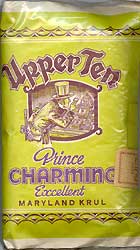 In 1978 there was a big problem when the brand owner and national representative of Upper Ten withdrew from the firm. A solution was found by buying the trademark rights of the Upper Ten brand and to enter into a partnership with an importer of pipes and smoking supplies. This company, Vasteman, was an importer of quality pipes with its own exclusive retail outlets in the Netherlands. A production hall was purchased besides the business of Vasteman and from there the production of Pool’s product Upper Ten was started up again. Unfortunately this latest rescue attempt failed. The collaboration with the pipes and smoking accessories business did not go as expected. Commitments were not met and therefore the curtain fell for the company on 1 July 1980. Despite this the registration of the name “B.V. Tabaksfabriek de Pool” was still maintained for some years in the trade register (for a short time it was a tobacco mail order company) until it was finally removed on 15 October 1988. The name “Pool”, attached to the tobacco industry in Hoorn, existed for about 140 years. Pool’s tobacco, there was no better. However, the Upper Ten brand lived on for some years. But more about that and about the Upper Ten products in a later blogpost.
In 1978 there was a big problem when the brand owner and national representative of Upper Ten withdrew from the firm. A solution was found by buying the trademark rights of the Upper Ten brand and to enter into a partnership with an importer of pipes and smoking supplies. This company, Vasteman, was an importer of quality pipes with its own exclusive retail outlets in the Netherlands. A production hall was purchased besides the business of Vasteman and from there the production of Pool’s product Upper Ten was started up again. Unfortunately this latest rescue attempt failed. The collaboration with the pipes and smoking accessories business did not go as expected. Commitments were not met and therefore the curtain fell for the company on 1 July 1980. Despite this the registration of the name “B.V. Tabaksfabriek de Pool” was still maintained for some years in the trade register (for a short time it was a tobacco mail order company) until it was finally removed on 15 October 1988. The name “Pool”, attached to the tobacco industry in Hoorn, existed for about 140 years. Pool’s tobacco, there was no better. However, the Upper Ten brand lived on for some years. But more about that and about the Upper Ten products in a later blogpost.
I want to thank the Vereniging Oud Hoorn and Tabakshistorie.nl for the info and pictures.

